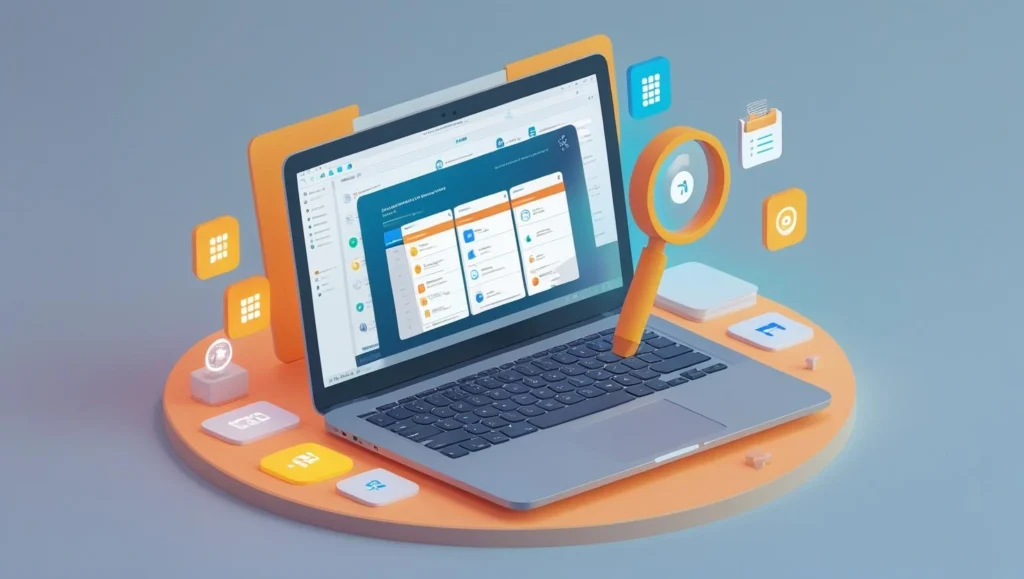In today’s digital-first world, productivity tools are more than just handy apps on your phone or computer—they’re built on decades of productivity science. From intelligent task managers and precision time trackers to habit-building apps and automation tools, modern solutions are designed with psychology and neuroscience at their core. These tools don’t just help us stay organized—they align with how our brains actually function to enhance focus, decision-making, and long-term performance.
But why do productivity tools actually improve output? Is it just about ticking boxes and managing to-do lists, or is there something deeper—rooted in behavior, routine, and cognition?
This article explores the science behind productivity tools, drawing from key findings in productivity science, behavioral psychology, and cognitive neuroscience. We’ll uncover how your brain processes tasks, how habits are formed, and why certain tools succeed in creating sustainable productivity gains. Whether you're a freelancer, entrepreneur, or corporate professional, understanding the science of productivity gives you a real advantage in today’s fast-paced, distraction-heavy work environment.
What is Productivity Science?
At its core, productivity science is the study of how humans optimize time, energy, and output. It draws from cognitive psychology, behavioral economics, and neuroscience to understand what makes us productive—and what doesn’t.
According to Scientific American, productivity isn’t just about working harder. It’s about managing mental resources like attention, motivation, and energy throughout the day. Digital tools that succeed are often those that tap into these scientific principles.
The Psychology Behind Productivity Tools
Many productivity tools mimic what psychologists call “external scaffolding”—tools that offload cognitive burden from your brain to the environment. Think of a to-do list. It's not just a reminder; it’s a memory aid that reduces mental load.

Key psychological principles behind productivity tools include:
1. Dopamine Feedback Loops
Each time you check off a task in an app like Todoist or Notion, your brain gets a small dopamine hit. This micro-reward keeps you coming back and builds positive behavior loops. Many task managers now feature animations or “confetti” to reinforce this effect.
2. Decision Fatigue Minimization
Apps like Trello and Asana let you visualize workflow stages. This reduces decision fatigue, a phenomenon where making too many decisions tires out your brain. By organizing tasks visually, these tools help you focus on execution rather than constant prioritization.
3. Goal-Oriented Motivation
Setting achievable daily goals through habit apps like Streaks or Coach.me reinforces consistency—a key to long-term success according to productivity psychology.
How Productivity Tools Tap Into Neuroscience
Tools aren’t just designed with UX in mind—they’re created to match how your brain operates. Here's where neuroscience meets the digital world.

Cognitive Load Theory
Your brain’s working memory has limited space. Productivity tools help by:
- Breaking tasks into steps
- Visualizing processes
- Reducing overload with reminders or automation
This improves clarity and reduces anxiety, allowing you to focus.
Attention Span Support
Apps that use focus timers like Pomodoro (e.g., Focus Booster or Be Focused) align with the brain's natural attention rhythms. These timers keep your prefrontal cortex engaged without overwhelming it.
Prefrontal Cortex Optimization
The prefrontal cortex handles planning, attention, and task management. Productivity tools are built to support this function. For example:
- Calendar blocking tools like Sunsama or Reclaim help with long-term planning
- Note-taking tools like Evernote enhance contextual memory
Aligning Tools with Natural Rhythms and Habits
Scientific studies suggest that productivity peaks in 90–120 minute cycles. Top tools are aligning themselves with this data.
Morning Focus Boost
Scheduling apps like Motion help you frontload your most important work in the morning—when willpower is high.
Circadian Syncing
Time tracking tools like Clockify and RescueTime now include activity graphs based on your most productive hours, helping you work with your energy instead of against it.
Habit Stacking
Tools like Habitica use gamification and “habit stacking” (pairing a new habit with an existing one) to make routines easier to adopt.
Productivity Tools That Apply Science Effectively
Let’s look at tools built on productivity science principles:

| Tool | Scientific Angle | Feature Highlight |
|---|---|---|
| Notion | Cognitive offloading | Task + note integration |
| Asana | Motivation loops | Milestone celebrations |
| Trello | Visual cognition | Drag-and-drop columns |
| Focusmate | Accountability | Real-time co-working |
| Zapier | Automation = fewer decisions | Task chaining |
| Evernote | Memory reinforcement | Tagging + recall search |
These tools demonstrate that science isn’t a side-note—it’s the foundation of great productivity design.
The Role of Automation in Productivity Science
In 2025, one of the biggest advances in productivity isn’t just organizing tasks—it’s removing them entirely through automation tools.
Explore This Further: Tools to Automate Repetitive Tasks in 2025
Why Automation Matters
According to productivity science, the human brain thrives when focused on creative or high-impact tasks. Automation frees up:
- Decision-making bandwidth
- Emotional energy
- Mental time (especially for knowledge workers)
Top Automation Tools Backed by Science
| Tool | Psychological Benefit |
|---|---|
| Zapier | Reduces task switching fatigue |
| Make.com | Reduces repetitive micro-decisions |
| IFTTT | Encourages habit automation |
These apps help implement “set-it-and-forget-it” workflows, giving your brain room to thrive.
Real-Life Case Studies: Where Science Meets Results
Case Study 1: Marketing Manager at a Startup
Problem: High decision fatigue managing team projects
Tool Used: Asana + Clockwise
Scientific Principle: Visual planning + circadian rhythm scheduling
Result: Increased focus hours by 32% within 6 weeks
Case Study 2: Freelance Designer
Problem: Overwhelmed with client revisions
Tool Used: Notion + Zapier
Scientific Principle: Task automation + memory offloading
Result: 8 hours saved weekly, reduced stress levels
These real-world examples show how applying productivity science isn’t abstract—it’s deeply practical.
Branded Tools That Embrace Productivity Science
Many popular tools explicitly design their features around scientific research:
- Notion: Minimal UI reduces cognitive noise
- Todoist: Karma system taps into reward behavior
- Sunsama: Encourages end-of-day reflections, aiding memory consolidation
- Evernote: Enables contextual recall, reducing mental strain
- Zapier: Frees up bandwidth by reducing digital clutter
Their success isn’t accidental—it’s built on behavioral design principles.
Global Perspective: Productivity Science Across Borders
Productivity science isn’t limited by geography. Tools developed in the US are now used by professionals across Asia, Europe, and South America—with some platforms even offering localized support.
For example:
- ClickUp offers multilingual dashboards
- Time Doctor is widely used in remote teams in India and the Philippines
- Toggl Track is favored by European creatives for its simple UX
This global adoption confirms the universal applicability of productivity psychology and neuroscience.
Final Thoughts: Why Productivity Science Will Only Grow
In an age where digital fatigue is real, the best tools aren’t just about more tasks—they’re about doing fewer things better. The future belongs to tools that:
- Respect brain limits
- Automate the boring stuff
- Enhance creativity, not control it
By grounding productivity tools in scientific principles, developers are helping users save time, reduce stress, and feel accomplished—without burning out.
If you want to buy premium productivity tools, start by choosing ones built on psychology and neuroscience. Look for features that support focus, habits, and decision-making.
Explore more science-backed tools to enhance your workflow in our automation tools guide.
Frequently Asked Questions
Q: What is productivity science?
A: It’s the study of how humans manage time, energy, and mental focus to maximize output using psychological and neurological principles.
Q: How do productivity tools use neuroscience?
A: They reduce cognitive load, support attention cycles, and align with how your brain stores and retrieves tasks.
Q: Are free tools as effective as paid ones?
A: Free tools offer value, but premium versions often include automation, reporting, and advanced features based on behavioral science.
Q: Which tools are best for task automation?
A: Zapier, IFTTT, and Make.com are leading choices that help users eliminate repetitive tasks.









